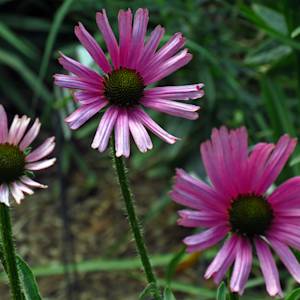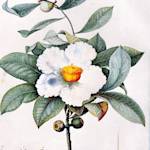Emergence of flowering plants — "The Great Radiation"
100 - 70 million BCE • Earth
"Sometime between 70 and 100 million years ago the number of flowering plant species on Earth exploded, an event botanists refer to as the "great radiation," . . . Interaction between insects and flowering plants shaped the development of both groups, a process called coevolution. In time flowers evolved arresting colors, alluring fragrances, and special petals that provide landing pads for their insect pollinators. Uppermost in the benefits package for insects is nectar, a nutritious fluid flowers provide as a type of trading commodity in exchange for pollen dispersal. The ancestors of bees, butterflies, and wasps grew dependent on nectar, and in so doing became agents of pollen transport, inadvertently carrying off grains hitched to tiny hairs on their bodies. These insects could pick up and deliver pollen with each visit to new flowers, raising the chances of fertilization. Insects weren't the only obliging species to help transport flowering plants to every corner of the Earth. Dinosaurs, the greatest movers and shakers the world has ever known, bulldozed through ancient forests, unwittingly clearing new ground for angiosperms. They also sowed seeds across the land by way of their digestive tracts." The evolution of flowering plants led to an influx of new life on the planet and for the first time in Earth's history than were more species on land than in the ocean.
Michael Klesius, "The Big Bloom—How Flowering Plants Changed the World," National Geographic.
Image: Banco de Imágenes Geológicas via Flickr, CC BY-NC-SA 2.0 DEED Attribution-NonCommercial-ShareAlike 2.0 Generic


Learn about Maya Lin’s fifth and final memorial: a multi-platform science based artwork that presents an ecological history of our world - past, present, and future.

Discover ecological histories and stories of former abundance, loss, and recovery on the map of memory.

Learn how we can reduce our emissions and protect and restore species and habitats – around the world.

See how art can help us rethink the problems we face, and give us hope that each one of us can make a difference.

Help make a global memorial something personal and close to home. Share your stories of the natural world.


